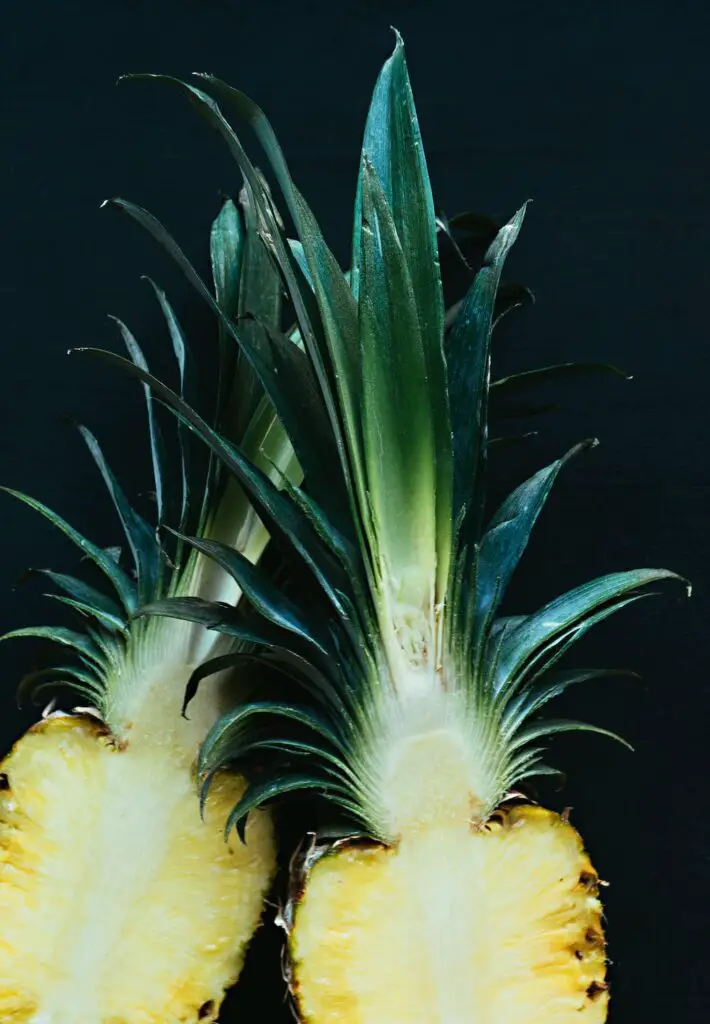Pineapples are not only delicious tropical fruits but also visually appealing plants that can bring a touch of exotic beauty to any indoor space. While traditionally associated with sunny climates, it is indeed possible to grow pineapples indoors, allowing enthusiasts in colder regions or urban environments to enjoy the pleasure of cultivating these tropical delights. In this article, we will explore the step-by-step process of growing pineapples indoors, from selecting the right variety to caring for the plant and ultimately harvesting the fruits.
Table of Contents
Selecting the Right Variety
Before embarking on your indoor pineapple-growing journey, it is crucial to choose a pineapple variety suitable for indoor cultivation. The most popular variety for indoor growing is the “Smooth Cayenne” pineapple, known for its adaptability and ability to thrive in containers.
Sourcing Pineapple Tops
Once you’ve decided on the variety, the next step is to obtain a pineapple top, also known as the crown. You can either purchase a pineapple from a grocery store or use the crown of a fresh pineapple you have enjoyed. Ensure the crown is fresh, with healthy, green leaves and no signs of damage or disease.
Preparing the Planting Container
Choose a suitable container for your indoor pineapple, preferably one with drainage holes. Fill the container with a well-draining potting mix that is rich in organic matter. A mix of regular potting soil and sand or perlite works well to provide the proper balance of moisture retention and drainage.
Planting and Initial Care
Gently remove the lower leaves from the pineapple crown, leaving only the topmost cluster intact. Allow the crown to dry for a day or two before planting it in the prepared container. Place the crown into the soil, ensuring that the leaves are above the surface. Water the plant thoroughly and place it in a warm, well-lit location with indirect sunlight.
Providing Optimal Growing Conditions
Pineapples thrive in warm and humid environments, so it is crucial to recreate these conditions indoors. Maintain a temperature between 70°F and 85°F (21°C to 29°C) and provide consistent humidity levels of around 50% to 70%. Consider using a humidifier or placing the pot on a tray filled with water and pebbles to increase humidity.
Watering and Fertilisation
Water your pineapple plant regularly, ensuring that the soil is moist but not waterlogged. Avoid overwatering, as it can lead to root rot. Pineapples are not heavy feeders, but occasional fertilization with a balanced fertiliser can promote healthy growth. Use a diluted liquid fertiliser once every month during the growing season.
Managing Light Requirements
Pineapples require bright, indirect sunlight for optimal growth. Place your plant near a window that receives adequate sunlight or use artificial grow lights to supplement the light requirements, especially during the winter months when natural light may be limited.


Patience and Growth Stages
Growing pineapples is a slow process, requiring patience and commitment. After the initial planting, it can take up to two years for a pineapple to mature and produce fruits. During this time, the plant will undergo several growth stages, including the emergence of roots, the development of leaves, and the formation of a flower stalk that eventually produces the pineapple fruit.
Harvesting Pineapples
Once your pineapple plant reaches maturity, harvesting the pineapple fruit is an exciting milestone in your indoor growing journey. Here are some essential tips for harvesting pineapples:
- Assessing Fruit Ripeness: Look for visual cues to determine if your pineapple is ripe and ready for harvest. The fruit should have a golden-yellow colour, with no traces of green. It should also give off a sweet aroma from the base. Gently tug on a few leaves from the crown’s center. If they easily detach, it’s a sign that the pineapple is ripe.
- Harvesting Process: To harvest the pineapple, hold the base of the fruit firmly and twist it gently to detach it from the plant. Alternatively, you can use a sharp knife to cut the fruit from the stem. Be careful not to damage the crown or the surrounding leaves during the process.
- Post-Harvest Care: After harvesting, rinse the pineapple under cool water to remove any dirt or debris. Allow it to air dry for a few hours. Once dry, store the pineapple at room temperature for a day or two to allow the flavors to develop fully. You can then refrigerate it if desired, but pineapples are often enjoyed fresh.
Conclusion
Growing pineapples indoors can be a rewarding and enjoyable experience. With the right variety, proper care, and a little patience, you can cultivate tropical delights right in your own home. From sourcing the pineapple top to providing optimal growing conditions and eventually harvesting the ripe fruits, each step is a part of the fascinating journey of indoor pineapple cultivation. So, why not add a touch of the tropics to your indoor space and enjoy the satisfaction of growing your own pineapples? Start your indoor pineapple adventure today and experience the joy of watching these exotic plants thrive and bear delicious fruits in the comfort of your own home.

